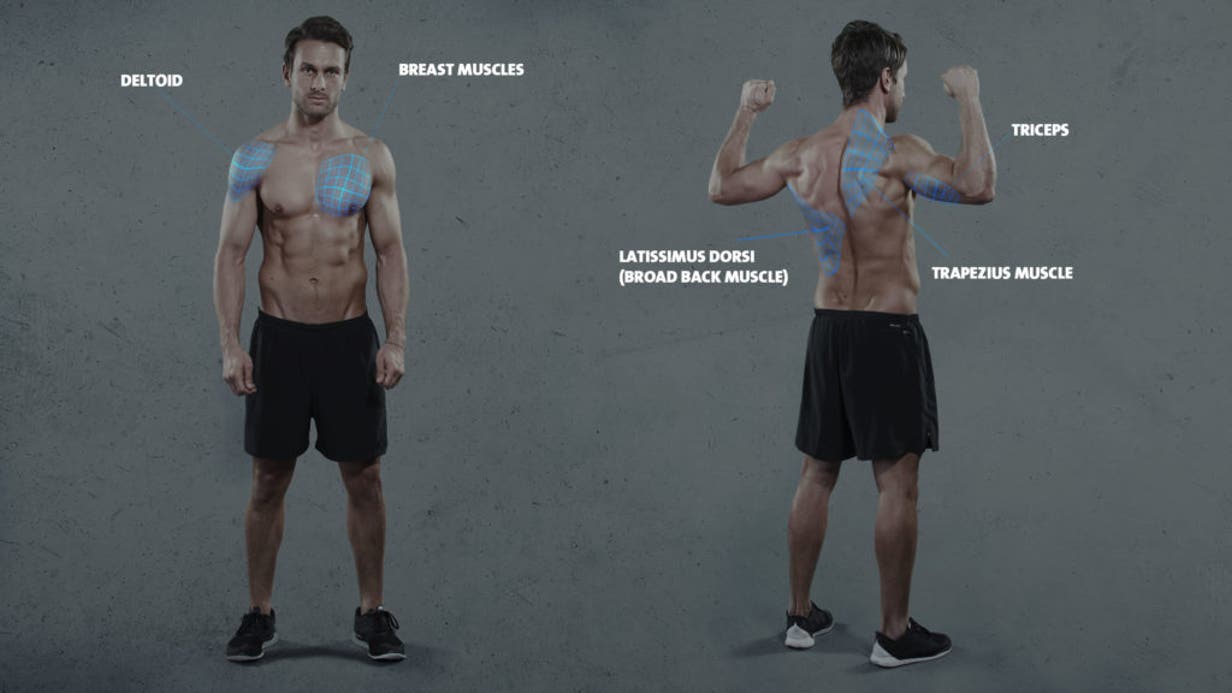What are Kipping handstand push-ups?
Handstand push-ups are the vertical variation of push-ups. As the name suggests, you start in a handstand position with your arms outstretched. From that starting position, you push yourself upward. Your arms are being bent so that your head briefly touches the ground and you end up in a headstand. By extending your arms and pushing your tilted legs, your body is pushed upwards into a handstand position. This is called the Kipping handstand push-up.
What muscles are being used during handstand push-ups?
The exercise is dominated by the shoulder, back, arm, and chest muscles. They hold the entire weight. The deltoids in the shoulder musculature,the pectoral muscles (pectoralis major and pectoralis minor) and the main back muscles (back extensor, trapezius, latissimus dorsi and some smaller muscles) do the bulk of the work. Not to mention the enormous force exerted by the triceps, the arm extensor. As a result, handstand push-ups involve a large part of the upper body musculature, while the core muscles in the abdomen provide tension throughout the body and stabilize your posture.

What is the difference between handstand push-ups and standard push-ups?
The dominant muscles used in the handstand pushups are the shoulder and back muscles, while normal push-ups require mainly chest muscles. Also, push-ups affect the front deltoid muscle more, while all three parts of the shoulder delta are used in handstand push-ups. Since the entire weight of the body is moved in handstand push-ups, the training stimulus on the muscles involved is considerably higher than in normal push-ups where about 80% of the body weight is pushed upward. Handstand push-ups are therefore essential for athletes who want to build strength.
Why the kipping push with Kipping handstand push-ups?
Handstand push-ups are an incredibly intensive workout, involving muscles which in everyday life are barely used, or not used at all. It is very difficult for most athletes to move their full body weight upward, using only the muscle groups mentioned above. The kipping push supports the motion and relieves the shoulders of some load so that less strength is required to perform the exercise.
Handstand push-ups don’t require any acrobatics!
For many people, the handstand alone poses the first challenge. There are two ways to reach the handstand: use either an upswing or, from a headstand, push (or press) yourself upwards. For many athletes, this requires quite an effort as well as confidence in their own strength, as very few have experience with the headstand and handstand poses. Once positioned in the handstand, even beginners should not have any problems keeping themselves at least in that position. The muscles involved can absolutely withstand the load. Use a wall to help with balance so that you can focus entirely on holding your position and then work, step by step, towards the Star.